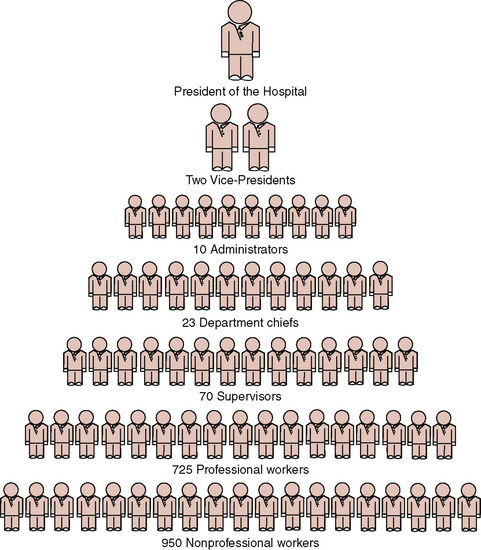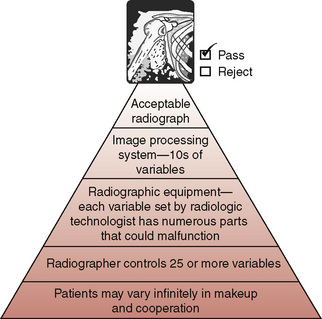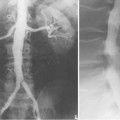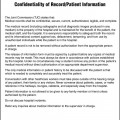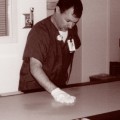CHAPTER 17 On completion of this chapter, you should be able to: • Explain equipment evaluation and monitoring. • Explain what is involved in developing skills and maintaining competency in radiologic technologists. • Describe the role of the radiologist in quality assurance programs. • Discuss methods for evaluating a quality assurance program. • Explain the significance of a quality assurance program from the standpoint of patient care, economics, and staff development. Most radiology departments operate under a pyramidal administrative structure. This type of structure allows a few administrators to manage a large number of employees (Fig. 17-1). Generally, the tip of the pyramid represents the highest-paid employees and the bottom of the scale the lowest-paid employees. This arrangement is economical in that most employees are on the lower end of the wage scale. Communication from the top down is usually formal so that when an order is issued from a top administrator, it is passed down to the lower levels of the pyramid without undue difficulty. However, when attempts are made to transmit a message back up the pyramid, a problem similar to what occurs in the telephone game played by children is encountered. In this game, participants relay a message from one end of a line of people to the other end by each participant whispering it to the next. In this manner, a statement such as “I’m happy to be here” may exit the telephone line as “I’ve snapped the beads, dear.” Although each participant tried to relay an accurate message, each one introduced a personal perception of the message into the original, thereby changing the real meaning as the message progressed along the telephone line (Fig. 17-2). Fig. 17-3 demonstrates how the production of a radiograph can be described by a pyramid that is, in many ways, very similar to the pyramid in Fig. 17-1. The various administrative levels shown in Fig. 17-1 are replaced by various radiographic equipment and personnel to create Fig. 17-3. 1. Read the examination request to learn your patient’s name and what radiographic procedure is to be performed. 2. Set up the examination room for the proper procedure by making sure the radiographic tube, table, and other items are in a position that facilitates moving the patient into the room and into position for the examination. 3. Explain to the patient that you are locating the exact area to be imaged; then touch gently as you position them. 4. Provide comfort items as necessary, such as sponges to assist in holding uncomfortable positions and pillows and sheets for modesty. All of these procedures help create a cooperative and responsive patient.
Quality Assurance in Radiology
Administrative pyramid
Patient
Creating Good Physical Conditions
Radiology Key
Fastest Radiology Insight Engine

